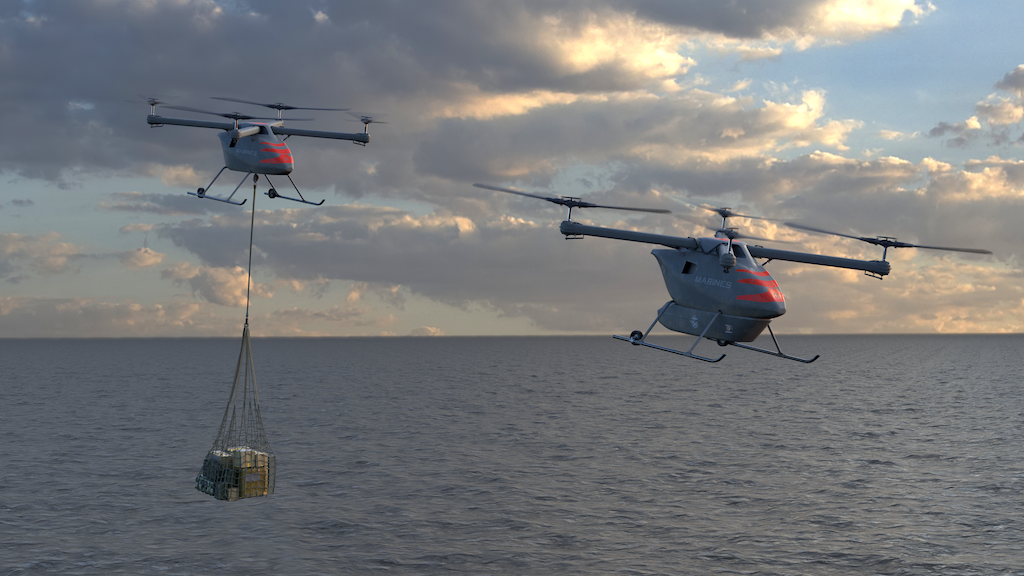
Kaman is developing an unmanned cargo rotorcraft, the Kargo, to meet the anticipated U.S. Marine Corps Unmanned Logistics System – Airborne Medium requirement for an autonomous resupply vehicle to support distributed operations.
The company is flying a 50%-scale model of the Kargo and plans to fly a full-scale demonstrator in 2022. The unmanned aircraft is being developed using independent R&D funds.
Powered by a 300-shp turbine engine driving four articulated two-blade rotors via a mechanical drive train, the 1,340-lb. gross-weight Kargo is designed to carry a maximum 800-lb. payload. The UAV can carry 600 lb. 143 nm or 200 lb. 390 nm and has a self-deployment range with external fuel of 523 nm.
Kaman plans to leverage work under way to develop the Titan, an optionally piloted and autonomous version of the K-Max external-lift helicopter, CEO Ian Walsh says. The company has upgraded the Marine Corps’ two unmanned K-Maxes for an autonomy demonstration planned in October.
The company has partnered with Near Earth Autonomy to develop the autonomy package for both the Titan and Kargo. An upgraded version of the lidar-based safe landing system will fly on the Kargo in 2022, according to Romin Dasmalchi, senior director of government business development.
The Marine Corps has yet to establish a formal requirement for the Unmanned Logistics Systems – Airborne Medium, so Kaman is spending internal funds on Kargo “to get to a certain level of readiness so that we can work with the services to prove the system out,” Walsh says.
The Kargo is designed to be simple, reliable, maintainable, easy to transport and operate, and affordable, Walsh says. The company looked at hybrid-electric propulsion, but decided to use a fossil-fuel engine so it could field something in the near term—within the next five years, Dasmalchi says.
The Titan is planned to be a certified commercial product, available as a new helicopter or as a retrofit for existing K-Maxes. Walsh said commercial operators of the K-Max have expressed interest in an optionally piloted capability, particularly for the firefighting mission.
Walsh said Kaman could begin delivering the certified autonomy retrofit package for K-Max in two years. The company also is looking at the potential for the Kargo in the commercial logistics market.
Beyond the initial safe landing capability, Kaman is working with Near Earth on GPS-denied navigation, sense-and-avoid in cruise flight and precision landing. The latter is required to operate from ships, either for bluewater resupply at sea or littoral ship-to-shore resupply to support Marine Corps operations.

